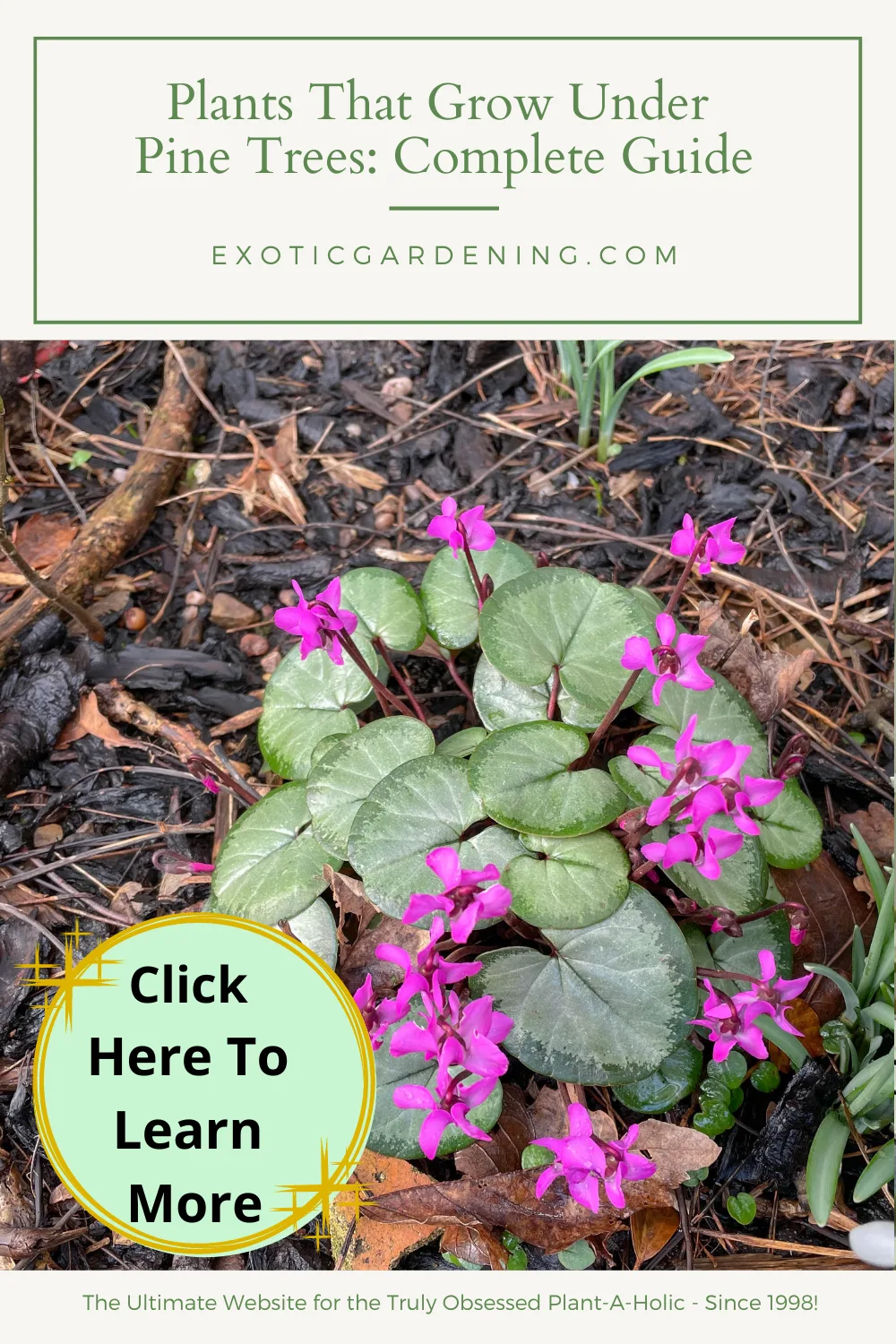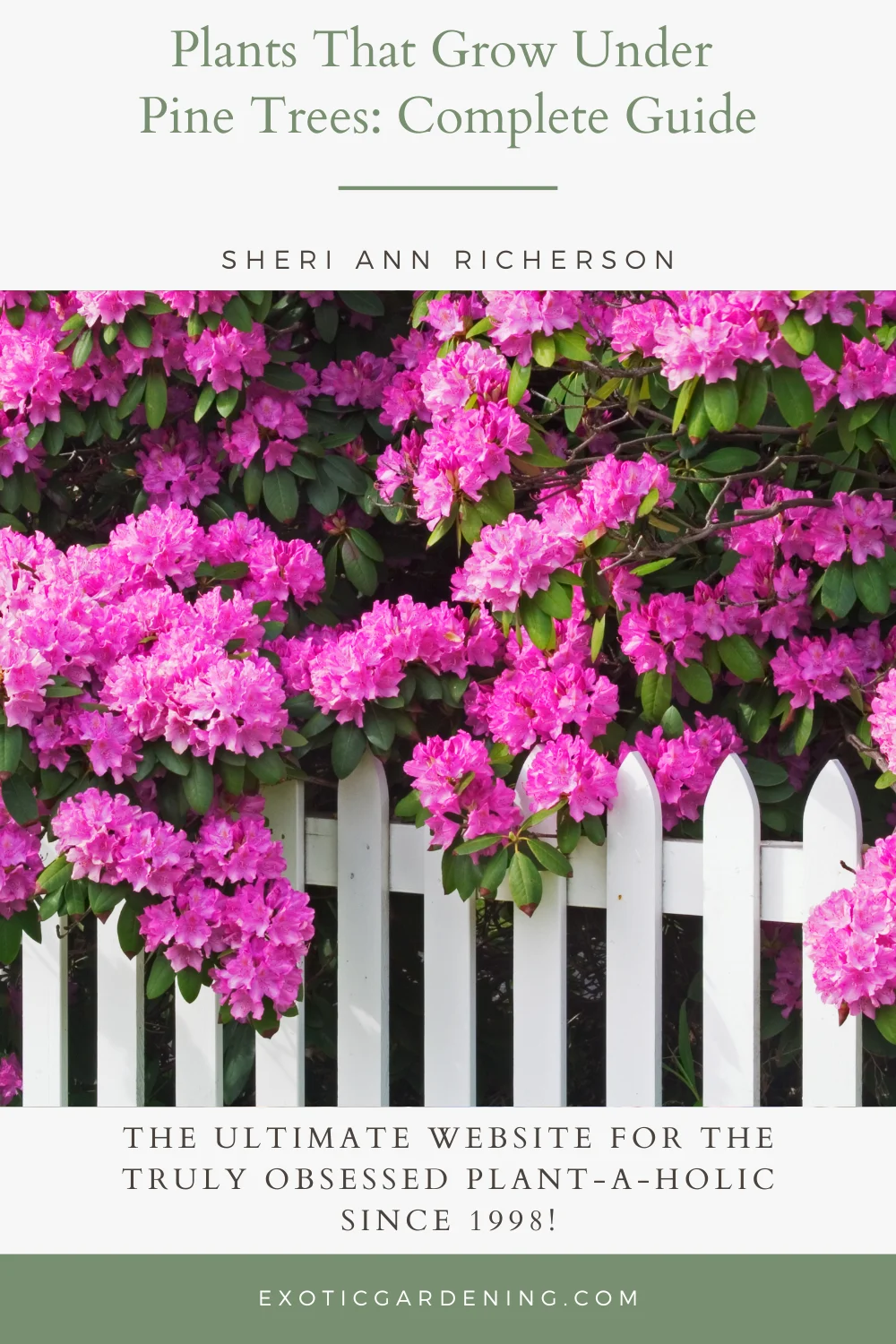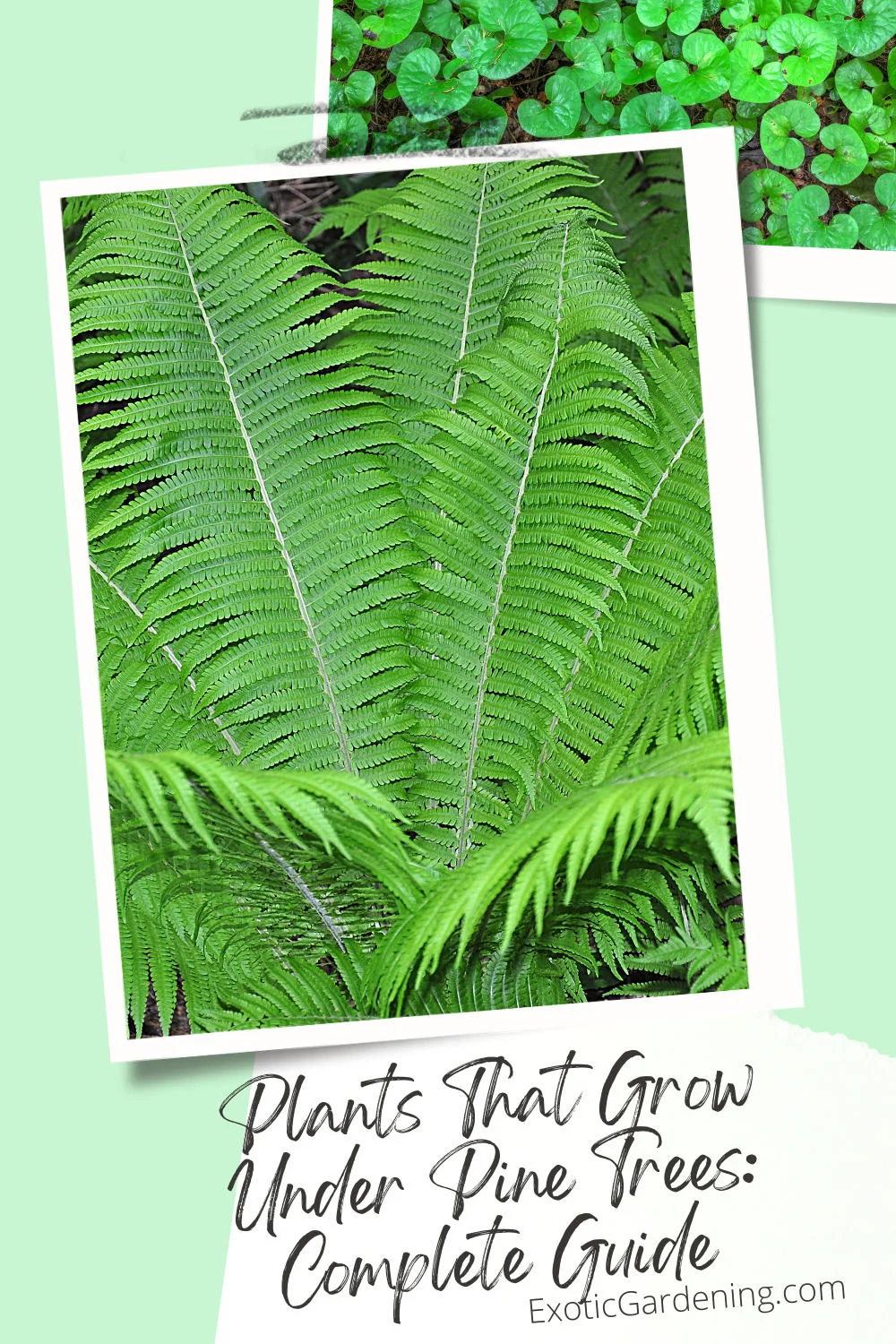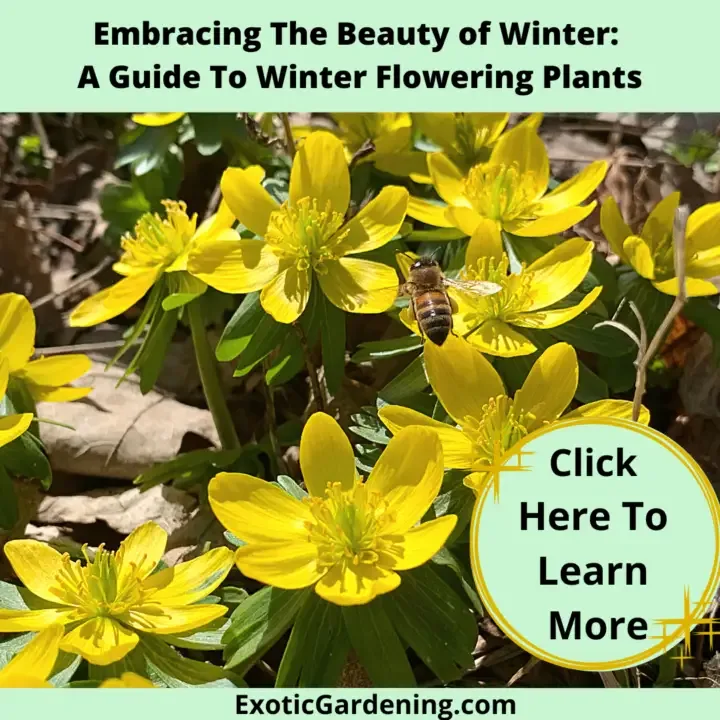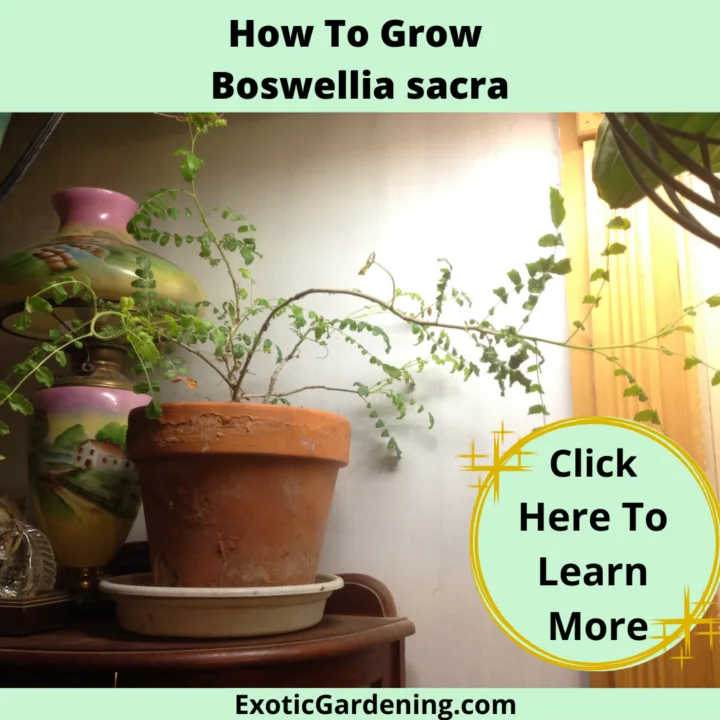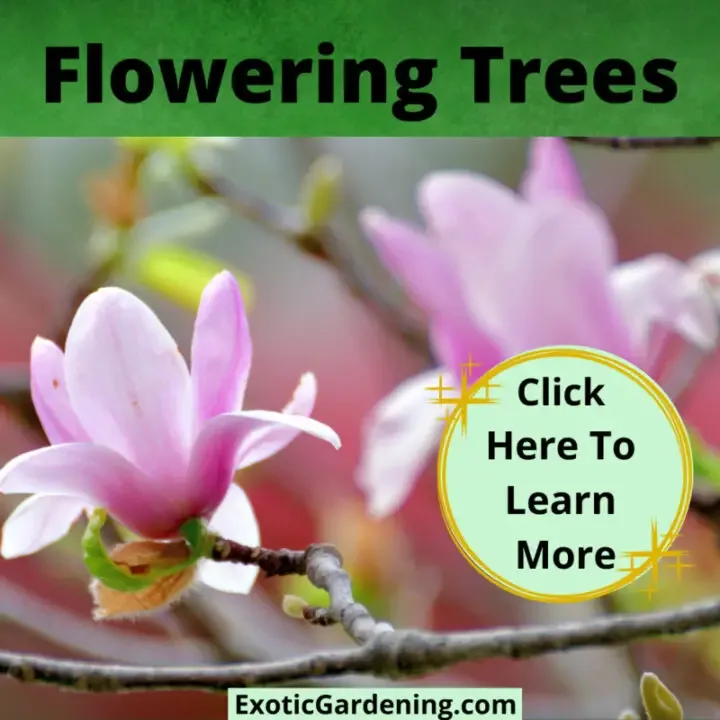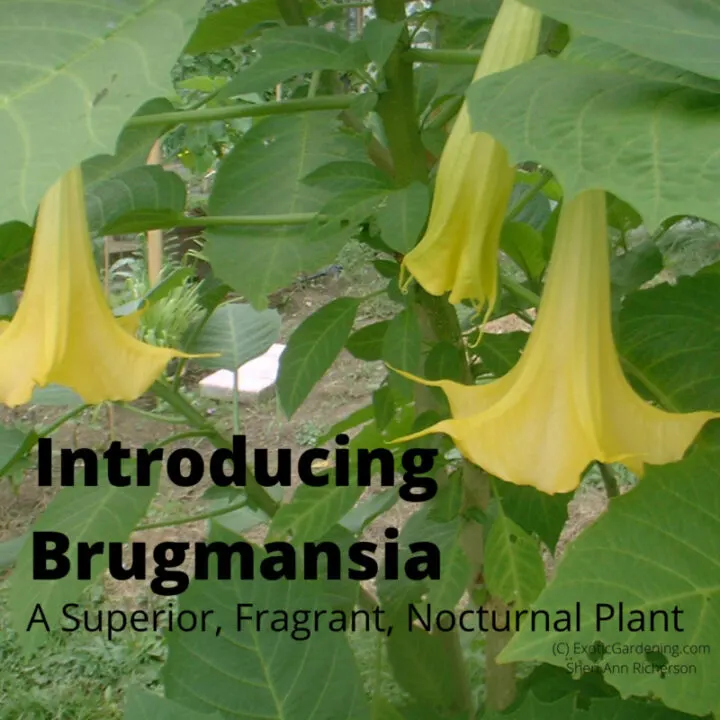Have you ever wondered about the potential of the shaded, needle-covered ground beneath your pine trees?
Surprisingly, there's a wealth of resilient plants that grow under pine trees, transforming these often-overlooked spaces into lush, green havens.
These areas, with their acidic soils and limited sunlight, create a unique gardening challenge.
The key is finding plants that not only tolerate but thrive in these conditions, turning a tricky area into a beautiful micro-ecosystem.
In this guide, we’ll explore the fascinating world of plants suited to life beneath the pines, providing you with tips and tricks to nurture a stunning garden even in the shadows.
So, let’s uncover the hidden potential under your pine trees together!
Understanding the Environment Under Pine Trees
Pine trees create a distinctive environment beneath their branches, a veritable woodland oasis.
As masters of survival, several specific plants favor this unique micro-habitat, thriving under the pine’s spell.
Pine trees offer a fascinating ecological area that only a certain gang of robust and adaptable plants can appreciate.
Pine Straw Mulch
Pine tree needles drop and create a thick layer of acidic mulch, what scientists call a "pine straw."
On its own, this straw appears to be pretty toxic for most plants.
In reality, it's a breeding ground for acid-loving plants.
Under a pine tree, soil pH can drop below 5.0.
While it might be fatal for some, it's downright nurturing for acidophilic plants like azaleas, rhododendrons, foxgloves, and blueberries.
It also deters weeds and leaf-munching pests.
As the needles slowly break down, they convert the soil into an organic haven, promoting water retention and lowering soil erosion.
Dappled Sunlight
Pine trees also create a unique lighting environment.
The denseness of pine canopies creates a dappled sunlight that certain species of plants thrive in.
Think of ferns, Solomon’s seal, or Hellebore.
They perform well under the "pine shade" because they're adapted to receive less light, similar to their native woodland habitats.
A light sprinkle of sunshine filters through the pine boughs, creating a unique ambience reminiscent of verdant forest floors.
Amidst all the challenges that pine trees bring, they also offer unique benefits.
Benefits Of Pine Trees
The year-round greenery of pine trees provides a shield against harsh weather patterns and predators.
The lower branches can even serve as a natural trellis for climbing plants.
Now, pine tree roots are a defining aspect too.
They shoot out far and wide, covering large sections of ground.
But there is a silver lining.
Pine roots, typically, are not invasive enough to choke out other plants.
Many species actually form a symbiotic relationship with these roots.
Lilies-of-the-valley, Solomon's seals, hostas- they adore the loosely spread root structure.
Gardening Adventure Awaits
Gardening under pine trees may be a challenge, yet divulges a certain charm.
Growing plants under there is an adventure into a niche gardening realm.
It's about finding the hardy survivors and acid-lovers.
It’s a special ecosystem that beckons the adventurous gardener to explore and appreciate the facets of adaptation and survival.
Filling In the Pine Tree Canopy: The Finer Details Of Understory Planting
In the illustrious and fascinating world of pine tree gardening, certain specific plants have developed clever adaptations that allow them to flourish under the stringent conditions defined by the needle-laden canopy.
It's an awe-inspiring sight to see these plants transform the otherwise austere woodland landscape into a lush green haven.
Too often, perennials are forgotten in the pine dominated areas, yet they thrive in these niches like nowhere else.
Here are a few plants that thrive growing under pine trees.
- Helleborus niger, also known as the Christmas rose, is an exquisite perennial that braves winter's chill, and robustly blossoms in the challenging pine shade. Adding a delightful dash of bright allure, this plant is the stuff of gardener's dreams!
- Ferns too, are another group of phenomenal understory plants. They positively flourish under the needle-dropping pine trees, forming carpets of verdant patterns in contrast to the coarse pine brown. Top fern picks like the lady fern (Athyrium filix-femina) and the Christmas fern (Polystichum acrostichoides), grace the ground with their delicate, feathery fronds, imparting an ethereal charm.
- The North American native wildflowers are another category of plants skilled in making the best of the pine tree dominance. The spring ephemerals are specially adept at playing the sun clock, with species like bloodroot (Sanguinaria Canadensis) and white trillium (Trillium grandiflorum), exploiting the early spring sun before the mature pine leaf-out happens. Their transient existence is an extraordinary spectacle taking place right under the pine tree canopy.
- Additionally, shrubs such as the Vacciniums, including blueberries and huckleberries, not only provide splendid visual appeal, but also produce delicious fruits that add a triumphant touch. Rhododendrons, with their wide range of colors and variety, offer a rainbow effect under the umbrella of pines, while filling the understory with their majestic blooms each spring.
Spreading this arsenal of pine-friendly plants beneath the majestic pines doesn't just activate a spectrum of textures and colors, but also provides shelter and nourishment to a myriad of wildlife.
This creates an expanded, harmonious ecosystem that truly embraces the full wonders of pine tree gardening.
For it's under the canopies of these towering evergreens that we can weave a garden tapestry that displays nature's infinite variety and ceaseless beauty.
After all, isn't revealing the rich layers of creation in our own backyards what pine tree gardening is truly all about?
Planting and Care Tips for Plants Under Pine Trees
Creating a thriving garden beneath pine trees requires careful consideration of the unique environmental conditions and plant selection.
Follow these step-by-step instructions to ensure success:
- Assess the Site: Begin by evaluating the area beneath your pine trees. Take note of the amount of sunlight it receives and the quality of the soil. Pine trees create acidic soil conditions, which may limit the types of plants that can thrive.
- Prepare the Planting Area: Clear away any debris, such as pine needles and fallen branches, to create a clean planting surface. Loosen the soil to a depth of at least six inches to improve drainage and root penetration. Set the pine needles aside so you can reuse them to mulch with once the area is planted.
- Select Suitable Plants: Choose plants known for their tolerance to acidic soil and shade. Azaleas, rhododendrons, ferns, and hostas are popular choices for under pine trees. Consider the mature size of each plant and space them accordingly to prevent overcrowding.
- Amend the Soil: Before planting, amend the soil with organic matter such as compost or peat moss to improve fertility and acidity. Mix the amendments thoroughly into the soil to ensure even distribution.
- Planting: Dig individual planting holes for each specimen, ensuring they are slightly larger than the root ball. Gently remove plants from their containers and loosen any circling roots before placing them in the holes. Backfill with soil and press firmly to remove air pockets.
- Watering: Water newly planted specimens deeply to ensure thorough root saturation. Keep the soil consistently moist, especially during hot and dry periods. Avoid overwatering, as excessive moisture can lead to root rot.
- Mulching: Apply a layer of the pine needle mulch you saved around the base of the plants to conserve moisture, suppress weed growth, and regulate soil temperature. Shredded bark also makes an excellent mulch choice for under pine trees.
- Maintenance: Monitor the health of your plants regularly, checking for signs of stress, disease, or nutrient deficiencies. Prune dead or damaged foliage as needed and remove any weeds that may emerge.
By following these steps and providing proper care, you can create a lush and vibrant garden beneath your pine trees, transforming what was once a challenging environment into a thriving oasis of beauty and tranquility.
Embracing Gardening Under Pine Trees
As we conclude our exploration of the enchanting world beneath the pines, one thing becomes abundantly clear: this unique soil-scape, with its acidic nuances, is anything but barren.
A myriad of plant species, perfectly suited to handle the challenges of this environment, can flourish, adding bursts of color, intriguing textures, and vibrant life.
Armed with the right knowledge about the ecological conditions, the specific types of plants best suited for this habitat, and the essential planting and care tips, you're ready to embark on the journey of creating a thriving garden under your pine trees.
So, embrace this gardening adventure, marvel at the dance of nature's elements, and savor the rewards of your efforts as you watch your garden under the pines burst into a lively tapestry of natural beauty.
Frequently Asked Questions About Growing Under Pine Trees
Q: Can I grow fruit trees under pine trees?
A: Fruit trees typically require full sunlight and well-drained soil, so they may not thrive under pine trees. However, some dwarf varieties or those tolerant of acidic soil may have limited success.
Q: How can I test the pH of the soil under my pine trees?
A: You can purchase a soil pH testing kit from a garden center or online retailer. Follow the instructions provided with the kit to collect soil samples and determine the pH level.
Q: Can I use pine needles as mulch in other parts of my garden?
A: Yes, pine needles make excellent mulch for other areas of the garden, especially for acid-loving plants like blueberries.
Q: What can I do if my plants become overcrowded under pine trees?
A: Thin out overcrowded plants by selectively removing some specimens to allow more space and light for the remaining plants to thrive.
Q: Are there any specific diseases or pests I should watch out for when gardening under pine trees?
A: Certain fungal diseases like pine wilt and pests like pine sawflies can affect pine trees and nearby plants. Monitor your garden regularly for signs of disease or infestation and take appropriate measures to address any issues promptly.
Q: How can I protect plants under pine trees from winter damage?
A: Applying a thick layer of mulch around plants in late fall can help insulate roots and protect them from freezing temperatures.
Q: What are some signs that my plants under pine trees may be suffering from nutrient deficiencies?
A: Yellowing leaves, stunted growth, and poor flowering can be signs of nutrient deficiencies in plants under pine trees.
Q: How can I prevent weeds from growing under pine trees?
A: Applying a thick layer of mulch can help suppress weed growth under pine trees. Additionally, regular weeding can help keep weeds at bay.
Q: How can I create a visually appealing garden under pine trees?
A: Mixing different plant textures, colors, and heights can create a visually appealing garden under pine trees. Consider using plants with varying bloom times to ensure year-round interest.
Q: How can I ensure my plants under pine trees receive enough water?
A: Regularly checking the soil moisture and adjusting watering frequency as needed can help ensure plants under pine trees receive enough water. Consider using soaker hoses or drip irrigation to deliver water directly to the roots.
The Ultimate Guide to Woody Wonders: Top Shrubs, Trees, and Woody Plants for Your Landscape
Best Plants for a Hedge: Your Ultimate Gardening Guide
Discover the best plants for a hedge: Timeless beauty and practicality meet in our top shrub and tree picks. Perfect your landscape today!

